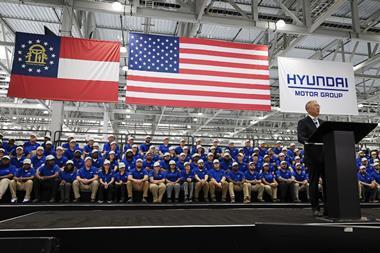
Ford has completed a two-year, $500m upgrade to its manufacturing and assembly plants in South Africa to enable it to produce and export its new Ranger diesel pickup trucks to 148 countries, mostly in Africa and Asia.
Ford's Struandale engine plant in Port Elizabeth engine has been extensively upgraded and now has capacity to make 75,000 engines and 220,000 engine component kits a year.
The new Duratorq TDCi engines will be equipped in the Ranger pick-ups, built at the company’s assembly facility in Silverton, Pretoria, which has also been expanded to meet an annual production capacity of 110,000 vehicles.
Approximately three-quarters of the vehicles being produced at the Silverton facility are for export, primarily to markets in Africa, Asia and Europe.
The Struandale Engine Plant is the only Ford facility that shares both component machining and engine assembly for the Duratorq TDCi diesel engine programme supporting the Ford Ranger. The machined components are used for engine kits, which are exported to other Ford Ranger assembly plants, and the fully assembled engines will be used in the South African-built Ranger.
"This new diesel engine will help drive our transformation in South Africa, and it is a key reason the all-new Ford Ranger pickup truck is a class leader in such a globally competitive segment," said Lewis Booth, Ford executive vice president and chief financial officer. He went on to say that the new Ford Ranger will be exported from South Africa to 148 markets around the world strengthening South Africa's role as a key operation in Ford's global manufacturing footprint.
*In other news, Toyota is investing 3 billion Kenyan shillings ($34m) in a local assembly in Nairobi, Kenya this year, with a 50% stake in local producer Associated Vehicle Assemblers (AVA), to expand models for distribution in the Eastern Africa region, including Hino trucks and buses. The plans include an upgraded facility that will also serve as a regional vehicle, equipment and parts distribution centre.
The company will expand the models assembled locally to include left-hand drive vehicles for sale in Rwanda, Burundi, Sudan, Ethiopia, Eritrea and Djibouti.
The development with AVA is part of a wider investment plan for Eastern Africa that Toyota is pursuing covering several sectors including energy and agriculture, alongside regional vehicle and parts distribution.

























![Global[1]](https://d3n5uof8vony13.cloudfront.net/Pictures/web/a/d/s/global1_726550.svgz)










